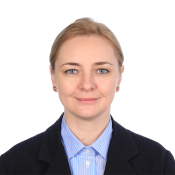Quantum seminar | 11 October 2023
Online+2530

As examples of multimodel big data collection, the following systems are going to be discussed. Soft matter, namely hydrogels and gas bubbles in liquids, supramolecular assemblies. We summarize specific examples of the use of machine learning (ML) techniques to study the structure and properties at the molecular, microscopic and macroscopic levels [1]. The approaches of artificial intelligence have greatly improved the prediction of material properties, stimulated the progress in modeling methodologies capable of revealing physical phenomena, and opened up new perspectives in the design and use of soft material devices. For this reason, we also provide guidance on machine learning methods and recommendations on best practices for data understanding. The following questions are discussed.
- What chemical reactions and systems can produce datasets integrated with functional properties from blood brain barrier penetration [2] to DNA encapsulation [3]?
- What are steps from molecular modelling with DFT [4] to molecular dynamics [5] for prediction, for example, coefficient of diffusion?
- What are physico-chemical and imaging methods for big data collection from current-voltage measurements [6-8], high speed camera [9] to atomic force microscopy [10]?
Validation of the created complex ML approaches, interpretation of the obtained ML data, their reliability and validity remain critical issues. The implementation of these steps in the development of ML techniques ensures the formation of a universal approach to the analysis and prediction of the behavior of systems and materials with a complex architecture.
Interestingly, the scientific flow for the discovery of new phenomena suggests new devices with the following basic technologies for big data collection. We can also mention the interest to use collaborative robots in laboratories.
1. Orlova, T. et al. Digital Discovery 2023, 2, 298-315.
2. Kovalenko, A. A. al. Future Med. Chem. 2023, 15, 923-935.
3. Aliev, T. A. et al. Nano Select 2022, 3, 1526-156.
4. Moskalenko, I. V. et al. Crystals 2023, 13, 1302.
5. Orekhov, N. et al. Cryst. Growth Des. 2021, 21, 1984-1992.
6. Ivanov, A. S. et al. J. Phys. Chem. Lett. 2021, 12, 2017-2022.
7. Ivanov, A. S. et al. ACS Appl. Bio Mater. 2020, 3, 7352-7356.
8. Lavrentev, F. V. et al. ACS Appl. Mater. Interf. 2022, 14, 7321-7328.
9. Korolev, I. et al. J. Phys. Chem. B. 2022, 126, 3161-3169.
10. Zhukov, et. al. ACS Appl. Eng. Mater. 2023, 1, 2084-2091.
